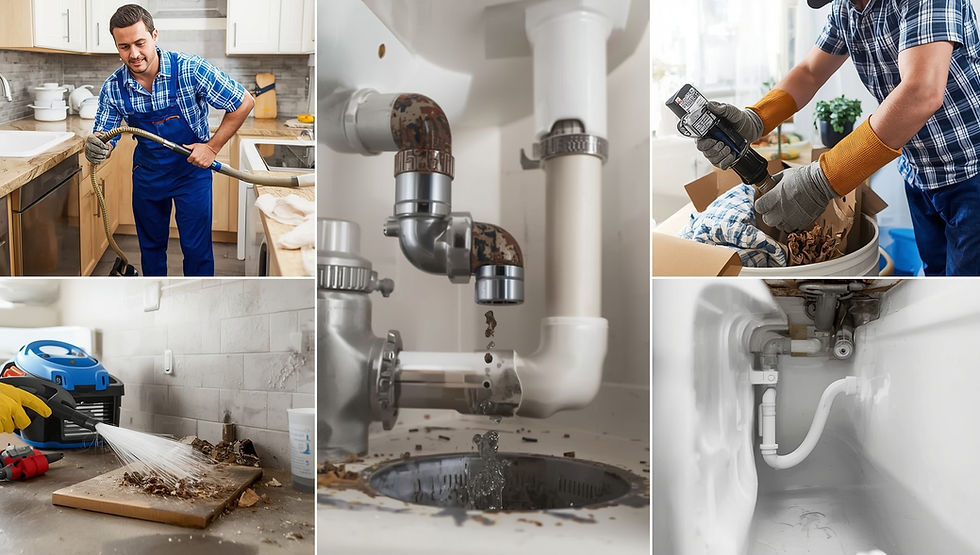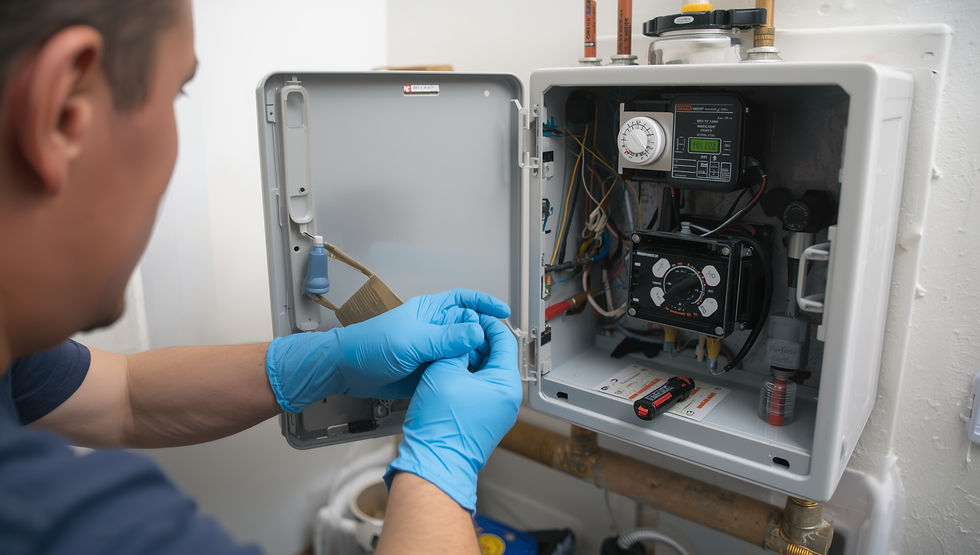How to Install a Gas Water Heater (Step-by-Step Guide)
- bradleyserranomark
- Jul 7, 2025
- 3 min read
A gas water heater keeps your showers hot and your home cozy. Many people choose gas because it heats water faster than an electric heater. If you want to save money and do it yourself, this guide will help you learn how to install a gas water heater safely.
Stay Safe First
Before you begin, remember safety is very important. Turn off the gas supply and water supply to your old heater. Make sure the room has good ventilation. You may need a permit to install a gas water heater, so check your local plumbing codes first. If you ever feel unsure, call a professional plumber.
What You Need
You will need the right tools and parts for a gas water heater installation. Here’s what to get:
Wrench
Pipe cutter
Pipe thread compound or Teflon tape
Flexible gas line connector
Venting kit
New gas water heater
T&P valve (temperature & pressure relief valve)
Drip pan for leaks
Remove the Old Water Heater
First, shut off the gas and water to the old heater. Then turn off the power if your heater has electric parts. Next, drain the old water heater tank. Use a garden hose and empty the water outside or into a drain. Disconnect the gas line and the water lines carefully. Now you can remove the old gas water heater and clear the space.
Step-by-Step Gas Water Heater Installation
Now it’s time to put in your new gas water heater. Follow these steps:
1. Position the New Heater
Place the drip pan under the heater to catch any leaks. Put the new unit in place. Make sure there is enough space around the heater for air to flow.
2. Connect the Water Lines
Attach the cold water inlet and the hot water outlet. Wrap the threads with Teflon tape or pipe joint compound to stop leaks.
3. Connect the Gas Line
Use a flexible gas connector to connect the gas line to the heater. Tighten the fittings well. Always check for gas leaks. Use soapy water on the connections—if you see bubbles, tighten the fitting again.
4. Install the Venting System
A gas water heater venting system removes fumes safely. Connect the vent pipe to the flue on top of the heater. Make sure the vent slopes up to let gases flow outside. Secure all vent pipe connections tightly.
5. Fill the Tank and Test
Turn the water supply back on. Let the tank fill completely. Check all pipes and fittings for leaks. Light the pilot light or ignite the burner if your unit uses an electric igniter. Let the water heat up and test the hot water in your sink or shower.

Avoid Common Mistakes
Many people make small mistakes when they install a gas water heater. Always vent the heater the right way. Loose fittings can cause gas leaks, so double-check every connection. Put a drip pan under the heater to catch leaks. Make sure you install the pressure relief valve to keep the heater safe. Always follow local water heater code requirements.
When to Call a Pro
Some installations are too hard for DIY. Call a licensed plumber if you feel unsafe or if you need help with local codes. A pro will make sure your gas water heater works well and passes inspection.
Keep Your Water Heater Working Longer
Once your gas water heater works, take care of it. Flush the tank every year to remove dirt and minerals. Check the venting and gas connections often. Inspect the anode rod and replace it if needed. Good maintenance helps your heater last longer.
Conclusion
Now you know how to install a gas water heater. You learned how to remove the old heater, set up the new one, connect water and gas lines, vent safely, and test your system. Remember to stay safe, follow the steps, and check for leaks.
If you ever feel unsure, call a professional plumber to help. Doing the job right keeps your home warm and your family safe. For more DIY plumbing guides, keep reading our blog!
FAQ
How long does it take to install a gas water heater?
It can take 2–4 hours if you have the tools ready.
Do I need a permit?
Many cities require a permit for gas water heater installation.
Can I do it myself?
Yes, if you follow steps carefully. Call a pro if you feel unsafe.




Comments